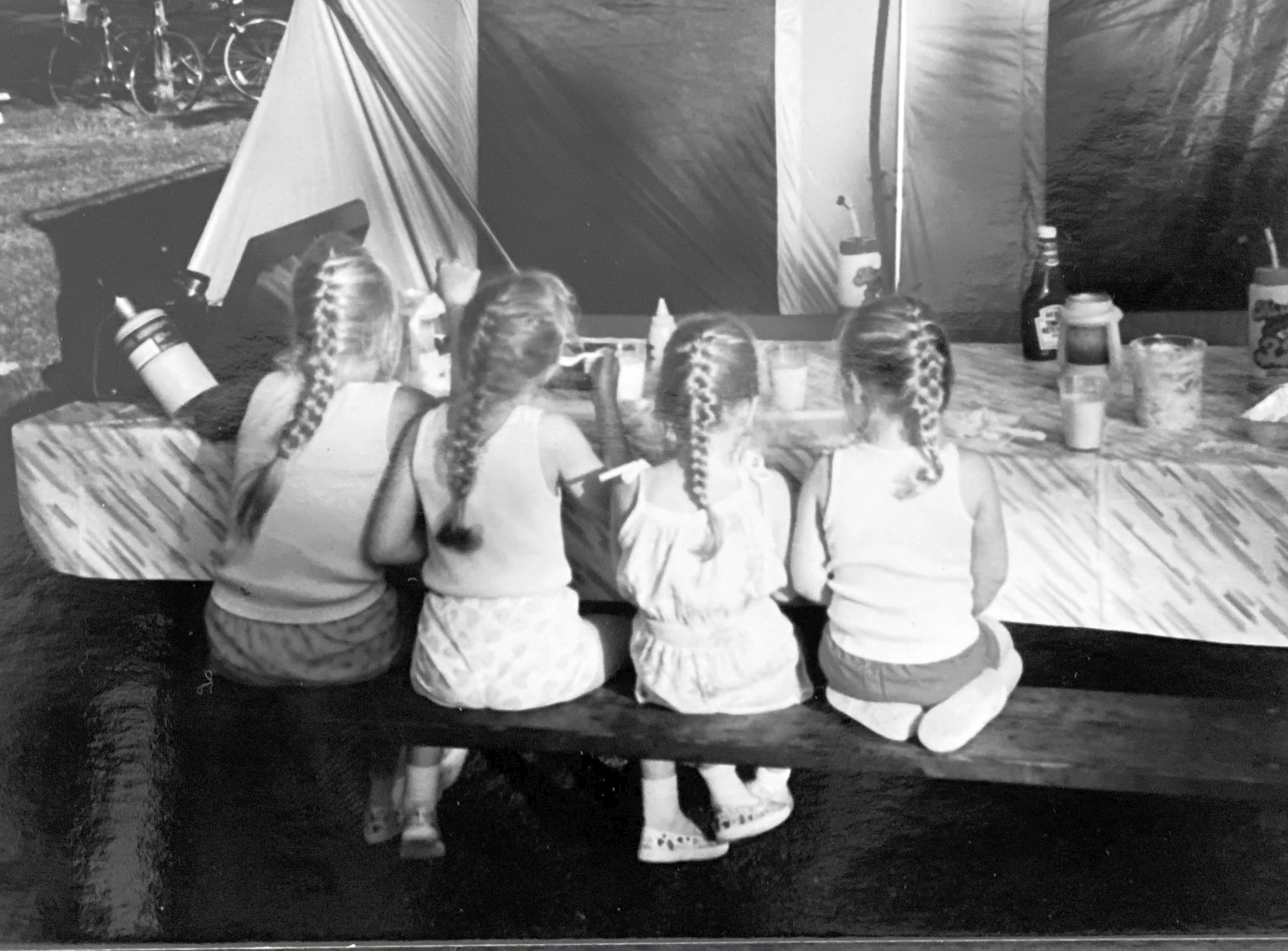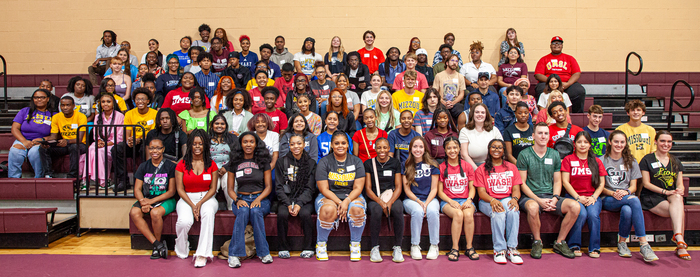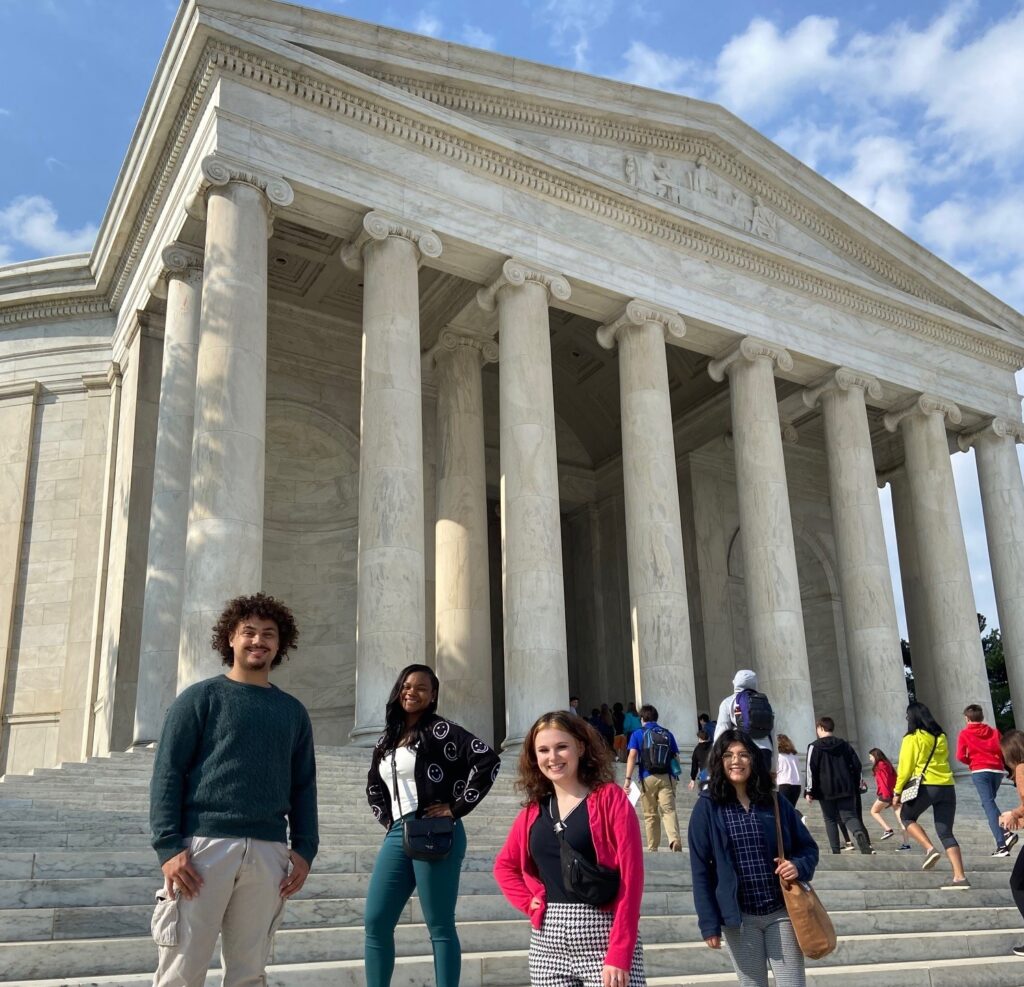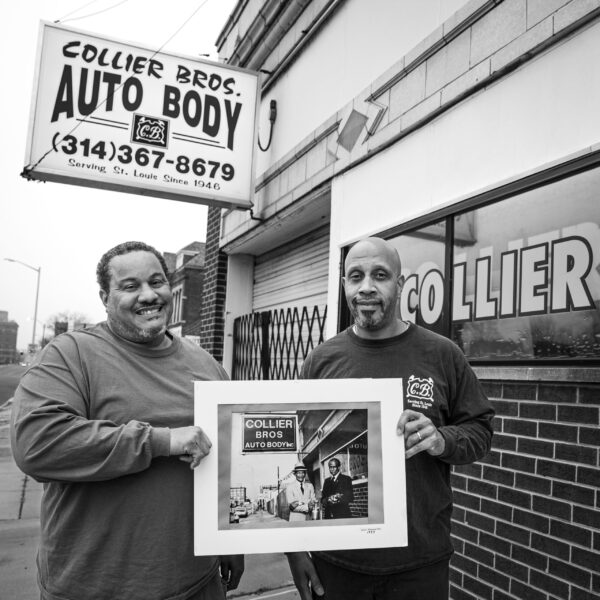
Guest Blogger Beth Andrews, second from the left, at the age of 6, seated with her sisters.
Guest Blogger Beth Andrews joined the staff of The Scholarship Foundation of St. Louis in 2015. In summer, 2019 Beth first set foot on a college campus when she coordinated a student orientation at Southeast Missouri State. Though she believed for many years that she was not college material, Beth enrolled last month at Western Governors University. The essay below is her second completed college-level assignment (on which she scored 98%). I recommend you take a moment to read her words in their entirety, as you may recognize qualities of yourself in her story. I certainly did, and I am so grateful for Beth’s willingness to appear here.
– Faith Sandler

Growing up in the Pacific Northwest, I lived in a melting pot of race, culture, self-identity, and personal expression. I was surrounded by so many diverse types of people, but I never really thought much about it. They were just people, at least, they were to me, and they weren’t different or less than, nor ideal or superior. I genuinely thought people were just people and that everyone else believed the same thing. For most of my life, I thought the world was peaceful and perfect; but when I moved across the country as an adult, the reality of racism and inequity hit me – issues, I believed, our society had left behind – and I chose the path of pain and discomfort as I reexamined my role in the oppression and mistreatment of others.
I grew up in a safe neighborhood of Tacoma, Washington, about an hour south of Seattle. As a white female, my life was relatively comfortable, and I attended good schools where college preparatory programs, counselors, and a career center were available and accessible. I graduated with around 350 other students of mixed races and ethnicities and only heard the word “racism” in history class. For many years, my best friend was Katrina, a Black girl who lived on the other side of town. I never saw her as Black, though. She was just Katrina to me, and the color of her skin was never something I thought about. It never occurred to me that her life experience could be different from mine. She went to a different school, but had access to all the same programs and opportunities. How could two people in such similar situations have completely different lives? I didn’t think that was possible because all people were the same, weren’t they? My world was sunshine and rainbows. I believed that everyone lived happily together without conflict, and I assumed that everyone else shared my experience. It wasn’t until I moved to St. Louis, Missouri that I would learn how wrong I was.
When I moved away from home at the age of 29, I changed many things in my life, including my career path, for a fresh start and improved quality of life. The job I had in Washington didn’t transfer to Missouri, so an occupational shift seemed like a promising idea and in line with everything else I was trying to do. Up until that point, very little prompted joy for me. I was going through the motions like a puppet and let others tell me what I should do. There was a constant fog, and I moved around with no direction or purpose, and that wasn’t the life I wanted anymore. Unsure of what exactly I wanted to do, my focus went to where I would be working instead of the position; I was looking for an organization whose mission and goals felt important to me. The Scholarship Foundation of St. Louis, a local nonprofit that works to provide low-income populations with the financial means to pursue postsecondary education, was where I eventually found my home. I never had the opportunity to attend college and helping students with similar barriers spoke to me, so much so that when I first discovered the organization and read about them, I was profoundly moved and started to cry. The ache I felt in my stomach over this missed opportunity in my own life was so painful I could hardly breathe, and the idea of making it possible for others transformed all of that into a smile so big that my face hurt. Awarding money to students is an important aspect of their work, but I could never have predicted how being part of everything else they do would affect and change my life.
From day one, it was a steep learning curve. Every staff meeting, presentation, and conversation introduced ideas and perspectives I had never considered. New information was thrown at me so often it felt like a game of dodgeball, and I’m no athlete so you can imagine how many made contact. Each one came with a sharp sting, knocked me off my feet, and left me completely bewildered. I learned about the poorest sections of St. Louis, that most of the residents were Black and brown populations, and how white people used redlining to intentionally create and sustain these areas. I heard about how white people in power did (and still do) everything in their power to keep these populations segregated and prevent them from living in white neighborhoods. Hate, disgust, and violence towards Black people were prevalent and spoken about regularly, but I was seeing and hearing all of this for the first time. When dodgeball knocked me to the ground, my grey-colored glasses fell off. I was confused and disoriented, constantly asking myself, “How is all of this still happening?” I remember a specific moment in a work meeting where I admitted during the discussion, “I thought racism didn’t exist anymore.”
The process of self-discovery I experienced was the most shocking of everything I learned. Without my blinders, suddenly, I saw the tension between White and Black people and could feel it in my body. It’s easier to spot than you would think, but I discovered that it requires a conscious effort to open your eyes and look. After about a year, I built up some calluses and I didn’t mind the balls hitting me as much. Another year passed, and I was able to stay standing instead of falling on the ground. Eventually, I came to a place where I welcomed the stings and moved toward the balls instead of dodging them, but that was another year or so. The pain never decreased, but the value in what they carried was far greater. Moving towards pain was never something I thought I would do, but I found within myself a desire for knowledge and a quest for understanding I never knew existed. My world was certainly no longer one of sunshine and rainbows, but I was ok with that and embraced it.
The ball with the most pain showed me that I’ve been unknowingly condoning racist behavior and the cycle of hate my entire life. I used to say I was “colorblind” and said it with great pride. I thought this was a good thing and how I was supposed to act, but when one of my colleagues at The Scholarship Foundation explained that being blind to color is the equivalent of putting your head in the sand, this word wasn’t a source of pride anymore and, instead, brought shame. I realized that I was contributing to the culture of racism which was the exact opposite of anything I would ever want to do. My colleague went on to explain that pretending color doesn’t exist only worsens the problem because you must first acknowledge an issue is present before you can take any steps to address it. This ball hit me in the stomach, and I felt incapacitated, unable to breathe. The disgust and anger towards my behavior were so overwhelming and brought me to tears, right in front of my colleagues. I thought showing everyone the same kindness and respect myself was sufficient and that it would make things ok, but I also learned that actions towards others and bias are not the same thing nor mutually exclusive. My belief is that no one should be treated differently, denied opportunities, or deprived of basic human decency because of their skin color, but I also know that this personal conviction is not enough. Changing how I speak and interact with others is the only way to express my intentions.
I honestly don’t know if Katrina experienced racism while we were friends. The likelihood is extremely high because I’ve learned how common this cruelty is, but the fact that I was unaware of what my best friend was going through is troubling, and that is the whole point. Racism is still a huge issue in our society, and I had no idea. Even worse, I was contributing to a practice that couldn’t be farther from my values and beliefs. It didn’t matter that I was unaware because I was still part of the problem, and that knowledge was debilitating and disturbing. It has taken me years of work on myself, but I no longer say I am colorblind. I acknowledge color, work to name my own bias, and actively look at what’s going on around me instead of sticking my head in the sand. Rather than avoiding the subjects of race and bias, I engage in conversation with those around me with honesty and transparency about my beliefs and opinions, despite how uncomfortable it feels. When I see actions or hear comments that promote the cycle of racism, I address it with the person and ask if they are aware of their behavior or how it could be interpreted by others. My stomach churns each time, but being uncomfortable is where change happens. In fact, I believe it’s the only way change happens. I am imperfect but make every effort to apologize when I make mistakes and make a conscious effort each day to be part of the solution instead of the problem.
Moving to St. Louis has forever changed me in nothing but positive ways. Had I never left my hometown, the world would still seem peaceful, perfect, and colorless, and I would still be contributing to hatred and intolerance. Acknowledging the reality of racism and inequity in our society, and my role in it, has been challenging, to say the least, and yet it is an experience I greatly appreciate and value. Without this game of dodgeball and my candid, straightforward colleagues, I would never have unearthed the disconnect between my words and my actions.




